If you’re not the biggest, you’re often forgotten. But that doesn’t mean that this huge Egyptian landmark isn’t equally impressive as its bigger brother!
In this post, you’ll discover the ultimate list of facts about the Pyramid of Khafre, the second-largest pyramid in Egypt!
1. It’s almost as big as the Great Pyramid of Giza
The Pyramid of Khafre is the second-largest pyramid of Ancient Egypt and is located at the Giza Necropolis just outside of Cairo.
It stands 136.4 meters (448 feet) tall, but it’s estimated that it stood 143.5 meters (471 feet) upon completion. The 4 sides of its base are about 215.25 meters (706 feet) long as well.
That’s about the size of 2 football fields, meaning this is a massive structure!
One of the most remarkable facts about the Pyramid of Khafre is that it’s nearly as big as the Great Pyramid of Giza, the biggest pyramid and the tallest building in history for over 3,800 years, and the only of the 7 ancient wonders of the world that still stands!
The Great Pyramid stands 138.8 meters (455 feet) tall today (146.7 meters / 481 feet originally) and has a base of 230.34 meters (756 feet).
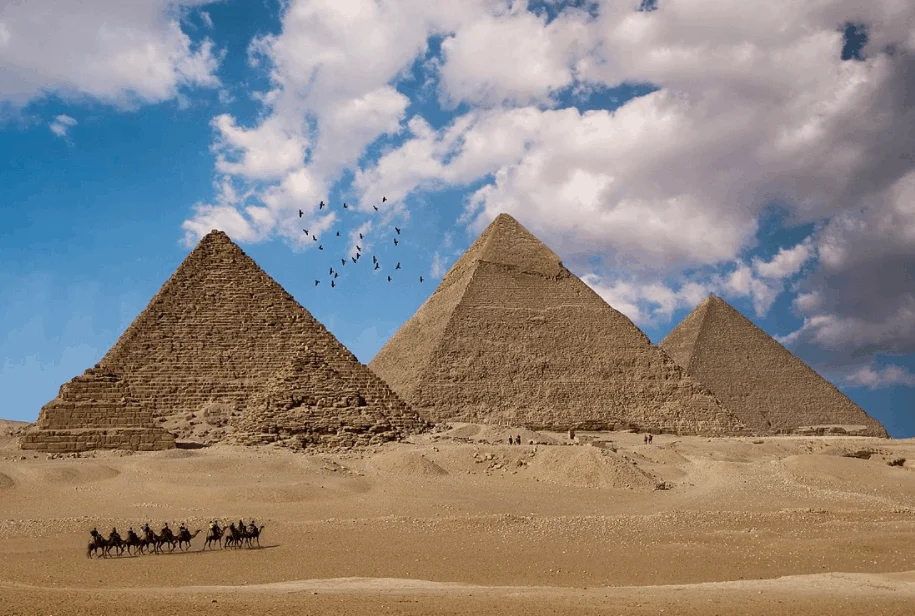
2. It’s steeper than Khufu’s pyramid
Another interesting fact about the Pyramid of Khafre is that it’s steeper than its bigger neighbor as it rises at a 53° 13′ angle while the Great Pyramid rises at a 51°50’24” angle.
This explains the little height difference and much bigger difference in the length of the base of both pyramids.

3. It was built on a rock which serves as its foundation
Did you notice it?
If you look closely, you can see that the Pyramid of Khafre appears to be slightly bigger than the Great Pyramid of Giza.
The reason for this is that it was built on a bedrock that stands 10 meters (33 feet) higher than the foundation of the Great Pyramid, which makes it appear taller.
This bedrock was used as the foundation of the pyramid, similar to how the Great Pyramid was constructed as well.
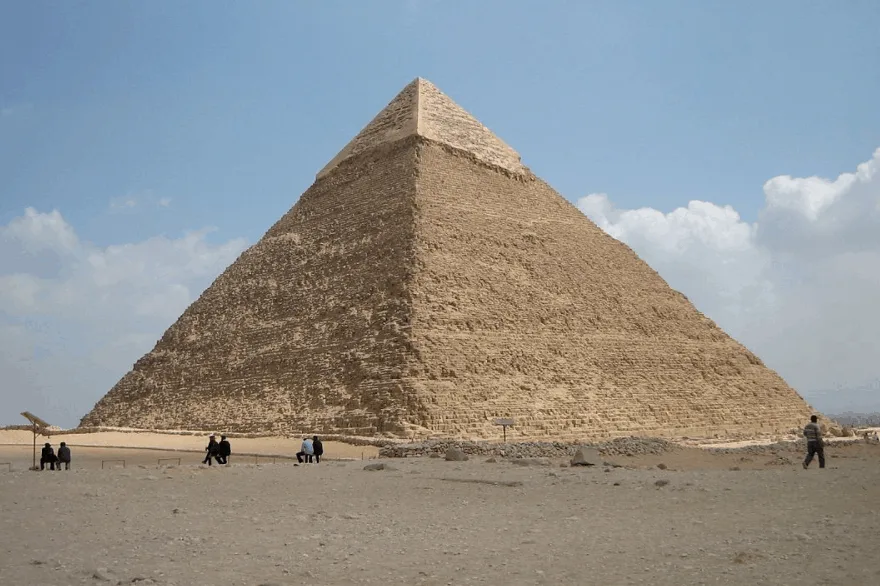
4. It’s the tomb of the Pharaoh with the same name
The pyramid was constructed by Pharaoh Khafre, also known as Chefren, who ruled in the Fourth Dynasty from around 2558 to 2532 B.C.
He clearly got the idea from his father because Khafre was the son of Pharaoh Khufu who constructed the Great Pyramid of Giza.
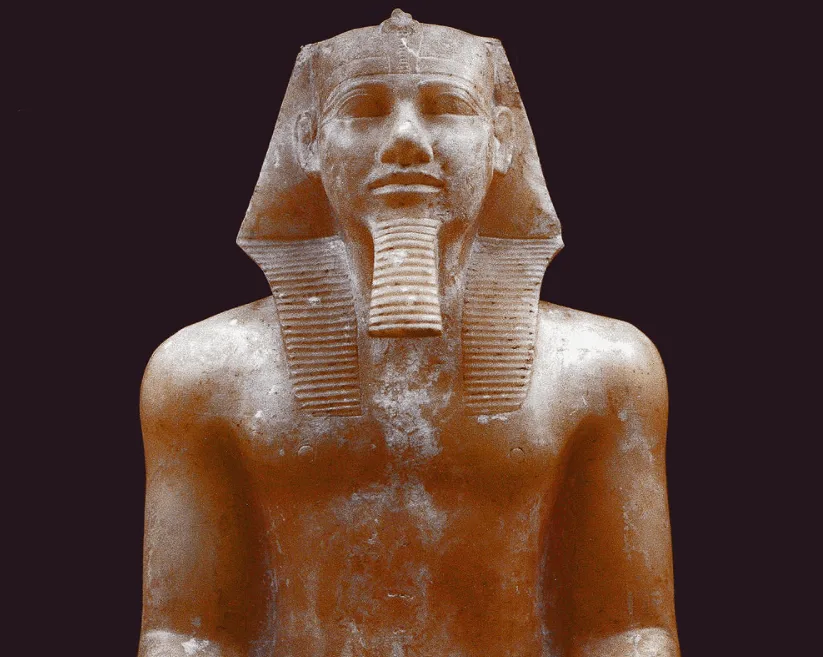
5. It was completed in the 26th century B.C.
Very little is known about Khafre, which also means it’s unclear when the construction of his pyramid began and when it was completed. It’s estimated that it was completed around the year 2570 B.C., which means the 26th century B.C.
The only source describing Khafre came from Herodotus, an Ancient Greek historian who wrote about 2,000 years after Khafre’s reign.
6. Khafre’s complex is much more than just a pyramid
As with the other pyramids, the entire mortuary complex of Khafre consists of several structures that are all interconnected with each other.
Khafre’s complex consists of a valley temple, a mortuary temple, and a 494.6 meters (541 yards) causeway that connects these structures to the pharaoh’s pyramid.
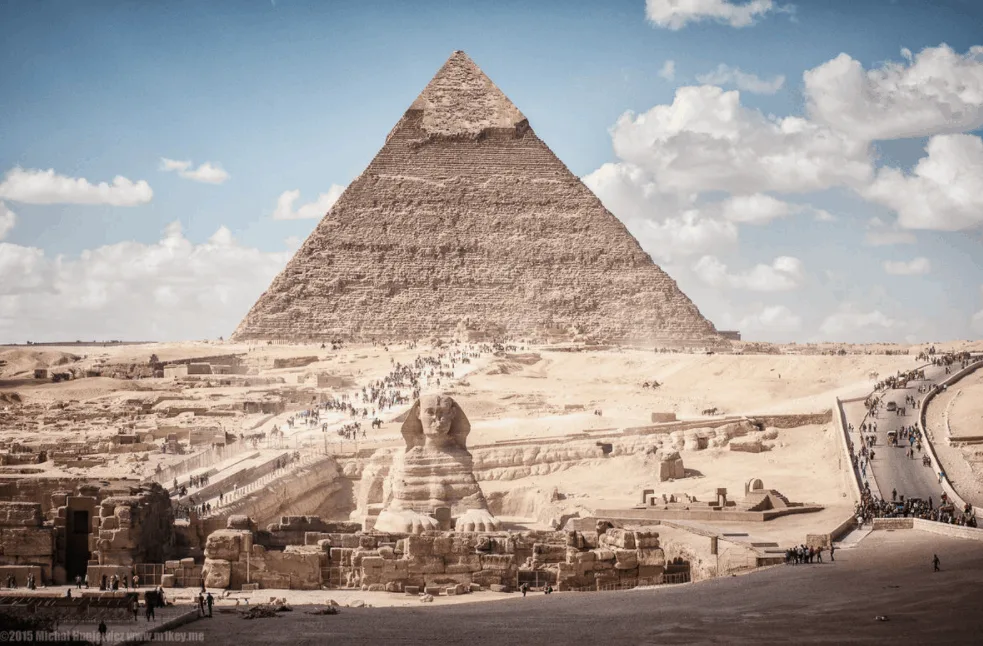
7. Some of the casing stones are still visible near the top
Most of the pyramid appears to be just a bunch of stones piled on top of each other. Back in the Ancient Egyptian days, these structures were covered with smooth, white Tura limestone which would have made the Egyptian pyramids appear bright and shiny.
Most of these casing stones have been stolen and used for other construction projects, resulting in only the heavy building blocks showing. Some of these near the bottom weigh up to 100 tonnes!
One of the most fascinating facts about the Pyramid of Khafre is that some of the casing stones are still in place near the top of the pyramid. Even though their color has faded, it shows how the pyramid would have looked thousands of years ago!

8. The pyramid has two entrances
As with every other pyramid in ancient Egypt, its purpose was to serve as the burial place of the pharaoh. Therefore, a passageway was constructed leading up to the burial chamber.
One of the most remarkable facts about the Pyramid of Khafre is that it has 2 entrances, which means 2 passageways are leading up to this chamber. These are also not aligned with the center of the pyramid as they are located 12 meters (39 feet) to the east.
The top passageway is located 11.54 meters (38 feet) above ground level, the other one is located at the base. The lowest passageway was completely carved out of the bedrock that the pyramid was constructed on as well.
So why does the Pyramid of Khafre have two entrances?
Either the idea was to make the pyramid much larger than it actually is, or the plans were changed midway through the construction, something that happened numerous times with other pyramids.

9. The burial chamber is actually a pit in the pyramid’s foundation
The lowest passageway was partially carved out of the bedrock but joins the top passageway about halfway as they both meet in an additional chamber which was most probably a storage room.
The final passageway runs straight to the burial chamber which is 14.15 meters by 5 meters (46.4 x 16 feet) and which was carved out of the bedrock as well.
Khafre’s sarcophagus, which was carved out of a solid piece of granite, was partially lowered into the ground as well. The roof of the burial chamber was made out of limestone.
10. The burial chamber was robbed a long time ago
The first person in modern times to explore the interior of Khafre’s Pyramid was Giovanni Belzoni, an Italian explorer who managed to gain access on March 2, 1818.
Because of the tricky way to get access, Belzoni was hoping to find an intact burial chamber, but this hope was clearly in vain.
It’s assumed that the contents of the pyramid were robbed during the “First Intermediate Period,” a period that lasted about 150 years in the 22nd and 21st centuries B.C.
Arabs also accessed the pyramid in the year 1372 A.D. as marks on the walls of the burial chamber were found dating from this period.
11. The temple near the pyramid contained 50 statues of the pharaoh
Khafre’s mortuary complex consists of two additional massive temples. One temple referred to as the “mortuary temple,” is located just next to the pyramid, but not much more than ruins remain of it.
The mortuary temple was built with enormous megalithic blocks. Some of them weigh over 400 tonnes! This temple was also decorated with over 50 statues of the pharaoh, but all of these have been robbed and used for other purposes.
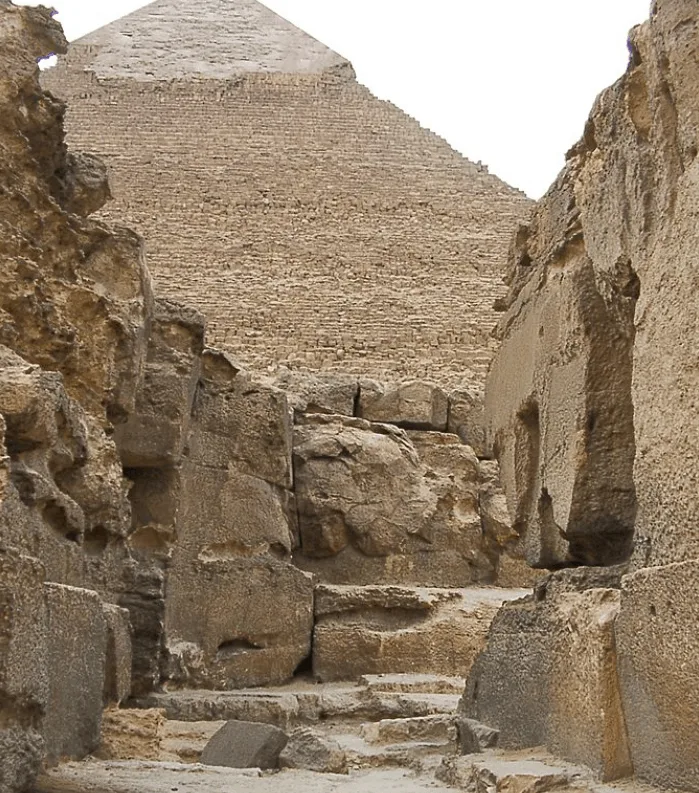
12. The entrance of Khafre’s valley temple is guarded by the Great Sphinx
What’s the most iconic monument from Ancient Egypt, apart from the pyramids?
That’s right, the Great Sphinx of Giza!
One of the most fascinating facts about the Pyramid of Khafre is that the Great Sphinx of Giza is part of the complex as it guards the valley temple, which is connected to the pyramid by a long causeway.
Even though there is no clear evidence, most historians agree that the Great Sphinx is not only part of the Khafre complex, but also that its face depicts that of pharaoh Khafre as well!

